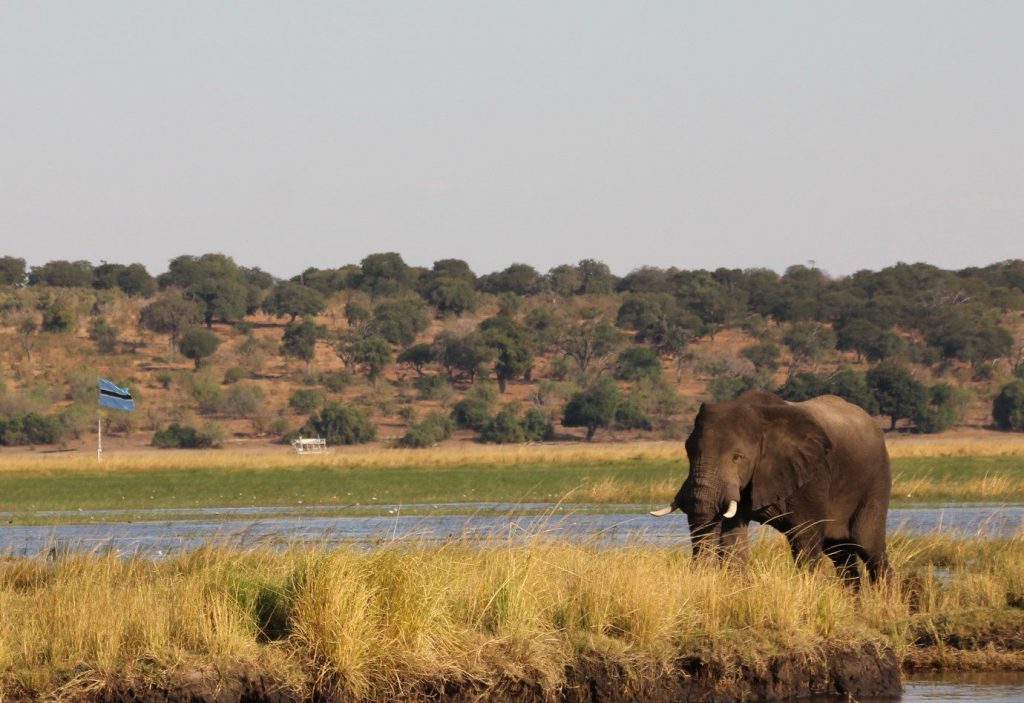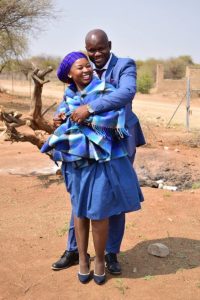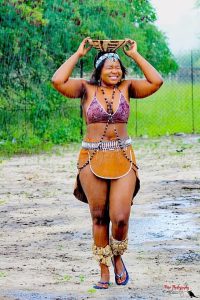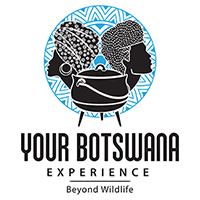
15 Things You Didn’t Know About Botswana
1) Botswana is home to the longest mammal migration in Africa
Few people know that Botswana is home to two zebra migrations, one of which is the longest mammal migration in Africa, about 1000km. The zebra move with the seasons and rainfall in search of fresh grazing, wandering between the Chobe River, through Savuti, heading South to Nxai Pan National Park and then return back again a few months later. A second migration occurs between the Central Kalahari Game Reserve and the Makgadikgadi Pans. Between 20 000 and 30 000 zebras migrate each year.
Experience the migration in the Boteti Area during the dry season from Meno A Kwena Tented Camp or Boteti River Camp, or in the Makgadikgadi Salt Pans in the wet season from Camp Kalahari

2) Cattle are a symbol of wealth, status and prestige
Cattle are deeply engrained in Botswana culture and everyday life, playing a significant role in the country’s economy, social structure and traditional cultural practices. Cattle are a source of livelihood for rural communities providing milk and meat as well as hides for clothing. Cattle ownership is often used to measure a person’s wealth and is a source of pride and respect in many communities. They are at the center of traditional ceremonies and rituals including weddings, where they are often used for the payment of dowries, and at funerals, as a sacrifice to appease the gods. An important source of income in Botswana, beef is Botswana’s primary agricultural product for export. Be sure to enjoy a Botswana beef steak, traditional seswaa (pounded beef) or some delicious biltong (dried, spiced and salted meat that makes a great travel or sundowner snack) on your visit.

3) Botswana is home to over half the population of San in Southern Africa
Historically called bushmen, the San are the indigenous people of Southern Africa, spread throughout the region with over half their population located in Botswana. The tribes are well-known for the profound connection they have with their land, for their intimate knowledge of the natural world, and the delicate balance they have maintained for millennia with the environment.
Learn about San culture while staying at Tau Pan Camp in the Central Kalahari Game Reserve or Meno A Kwena and Camp Kalahari in the Makgadikgadi area.

4) Botswana is Africa’s oldest surviving democracy
Since gaining its independence on the 30th of September 1966, Botswana has maintained an uninterrupted tradition of democratic elections, making it Africa’s oldest surviving democracy. Hours and sometimes days are spent in endless discussions, often under the shade of a tree, where all people have the right to be heard and time has little meaning. The kgotla, a traditional public meeting space, is at the heart of the Botswana democracy, working alongside the more formal legal system. Here community members gather to discuss issues, make decisions and share ideas. The President will also use this space to meet Batswana to discuss governance issues.

5) The meaning of names
Most traditional Setswana names carry a strong meaning and are usually associated with God. In Setswana culture, it is believed that you become what you are named. Children may also be named for the event or context of their birth. For example, a child born during the rainy season can be called ‘Motlalepula’ meaning ‘the one that brought rain”. When travelling in Botswana, ask your guide to share the meaning of his or her name and enjoy the inevitable story that accompanies this.
Learn more about Botswana Culture on the Maun Immersive Tour
6) Dual religion practices: Christianity and the ancestors
Batswana are a God-fearing nation with Christianity being the bedrock of the spiritual beliefs of most Batswana. In addition, many will also practice their traditional African religion, where ancestors are believed to maintain a spiritual connection with their living relatives. The spirits of these ancestors can do both good and bad. While most are good, bad actions taken by ancestral spirits can result in illnesses to warn people that they have gotten onto the wrong path. To cure these illnesses, some Batswana may engage in traditional healing practices which would include seeing a dingaka or witchdoctor.
7) Weddings: everyone is invited
Setswana weddings are a community affair. No guest lists are sent out, everyone is invited. If there is a wedding in your village or neighbourhood, you are more than welcome to pull up a chair and grab a plate of food, whether or not you know whose wedding it is. When food runs out, it’s a good sign! This means that everyone who attended had a good time.

8) Big, juicy caterpillars
A delicacy eaten is the Mopane worm which is a big, juicy, caterpillar. The Mopane Tree is a prominent feature of the northern-Botswana landscape and the worms are harvested after the rainy season. Mopane worms can be stewed or dried. Those that have tried it say it tastes like chicken and makes for a yummy bar snack! You can buy them dried from the road side vendors.
Sample traditional Setswana food from a local tuck shop, at the Boma evening on safari or on the Maun Immersive Tour
9) Pula: a reason to celebrate
Pula directly translated means rain. It is also the name of the country’s currency. Home to much of the Kalahari Desert, rain is very scarce in Botswana and therefore valuable and a blessing. The word also serves as the national motto of the country. If you hear people screaming or chanting ‘’Pula’’, it means something extraordinary has happened! The people will also chant in response “A e ne”, which means let it rain, as acknowledgement.

10) Ethnic groups
There are 12 different ethnic groups in Botswana. The three main tribes being Tswana, Kalanga and Baswara. Some groups have their own language and each group has a totem (called sereto) which is often an animal. The totem is highly respected by its tribe. It is taboo to kill or eat one’s totem and those who have tried usually get sick. In basket-weaving, a tradition passed down from multiple generations of women, these totems often inspire patterns created by the basket weavers.
11) Botho
Botho is a Setswana word that means “humanity”. It is a traditional African philosophy that emphasizes the importance of treating others with respect, dignity and compassion. Botho is a way of life that promotes social harmony, mutual respect and responsibility towards others. The people of Botswana (called Batswana) are welcoming, humble and respectful, always willing to go the extra mile. And they love to share their culture with you.
Feel the warmth of their hospitality during the the Maun Immersive Tour or at any lodge in the Delta.

12) Green Season is underrated
November to March is when lots of animals give birth due to the summer rains bringing an abundance of vegetation and surface water. Rain tends to fall in short, often spectacular thundershowers, usually in the early afternoon which typically creates spectacular sunsets, which are a delight for photographers. This is a great time of year to visit with a lot of juvenile animals around, leading to increased predator-prey interaction. These months are also referred to as ‘green season’ when many of the camps offer great value seasonal rates. It is the ideal time to travel should you have an interest in birding as well as the Kalahari, Makgadikgadi or Savute regions due to animal migrations.
13) On Camera
Popular music videos for hit songs “Am I wrong” by Nico & Vinz, and “Wildest Dreams” by Taylor swift, were filmed in Botswana.
Some examples of movies that have been filmed in Botswana include:
• The ‘’No. 1 Ladies Detective Agency’’ based on the Novel by Alexander McCall Smith
• A ‘’United Kingdom’’ which is a biographical romantic drama that tells the story of the interracial marriage between Seretse Khama, the first president of Botswana, and Ruth Williams, a British Women.
• ‘’The Gods must be Crazy 2’’ which is a South African comedy film.
• ‘’Cry Of The Kalahari’’ which is a documentary film based on the book by the same name by Mark and Delia Owens.
National Geographic explorers-in-residence, Dereck and Beverly Joubert also live in Botswana and many of their wildlife documentaries are filmed in Botswana.

14) Three places to call home
The Batswana typically own three pieces of land, all allocated to them by the Botswana government, for free. The first is a home in town, a place were usually the family resides. It is not uncommon for Batswana to then work elsewhere in one of the bigger centers of Botswana. The second and third home will be out of town and are a farming plot for growing vegetables and a cattle post for keeping one’s animals. Batswana love to go and visit their cattle post during their holidays to relax and get away from the hustle and bustle of town life.
15) The Pans that were a lake
In the north eastern part of Botswana, lies the Makgadikgadi Pans, the largest salt pans in the world, spanning over 16,000 km². These pans were once the centre of a super lake fed by the Zambezi River that due to the shifting of tectonic plates which cut off the feeding rivers, evaporated millions of years ago. During the wet season, the pans fill with water and attract large numbers of zebra, springbok and wildebeest, followed closely by predators. All of this makes for fantastic game viewing. Recent studies of human mitochondrial DNA suggest that modern Homo sapiens first began to evolve in this region some 200,000 years ago. It is also home to one of the zebra migrations in Botswana.
Experience the true and raw beauty of this remote destination from Planet Baobab or Camp Kalahari.



